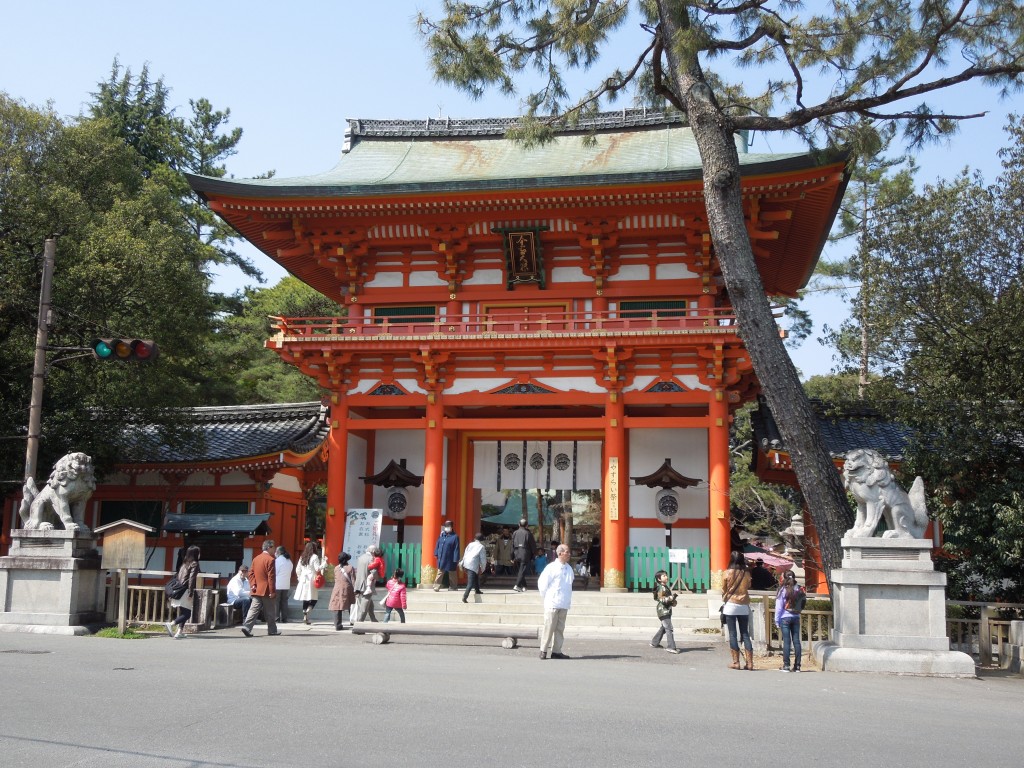
The rather grand entrance gate of Imamiya - like a miniature Heian Jingu
Imamiya is not one of Kyoto’s foremost shrines. But it’s atmospheric, boasts some unusual features, and hosts an interesting festival. it stands next to the temple of Daitokuji, famous for its Zen gardens and historical associations (such as with the iconoclast Ikkyu, and tea master Sen no Rikyu). It is also close to the grave of Murasaki Shikibu, author of Tale of Genji (c.1004).
The shrine was established originally on Funaoka Hill for protection against plague. It moved to its present location around the turn of the millennium, which explains its name (Now or New Shrine). it’s closely associated with the Yasurai Matsuri, which started as an attempt to placate the kami of pestilence during cherry blossom time (the falling petals were blamed for spreading the plague).
The shrine is dedicated to three deities associated with the region of Izumo, with the main kami being Okuninushi (or Onamuchi). An unusual feature is a group of eight shrines ranged in a row, which are branches of eight powerful types of kami worship. There’s Daikoku; Ebisu; Hachiman; Atsuta; Sumiyoshi; Katori; Kagamitsukuri; and Suwa. The idea is that instead of making pilgrimages to the head shrines, you can just come here and do the whole lot in one go, so to speak. Neat!
The shrine has one of the best collection of omamori (amulets) that I’ve seen. (There’s an online display in English here.) One of them, interestingly, is the Zen figure, Daruma, presumably a nod in the direction of the temple next door. Another is styled as a Heian-era poem, presumably in honour of Murasaki Shikibu. And a third one, called tamanokoshi, is for Cinderella types who want to marry into a rich household. Personally I plumped for one shaped like a small mirror, which only reveals the fortune through reflection when the sun (or a light) is shone onto it. Mine was daikichi (big luck) I’m happy to report.
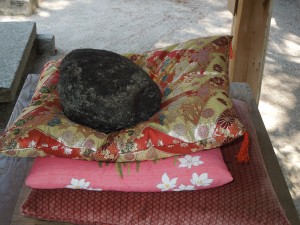
Magic Rock
The shrine makes much of its ‘magical’ rock ahokashisan, believed to possess wish-fulfilling properties. One often comes across such rocks at shrines, with your fortune depending on whether you can easily pick it up or not. Here it’s said that if you tap the stone three times and lift it, it will feel heavy. If you then stroke it three times and make a wish, it will feel light and your wish will be granted. It’s also said that if you rub the stone, and then rub an injured part of the body, it will heal (also a widespread practice).
One special feature of the shrine is found outside its entrance, where there are two ancient shops selling roasted rice dumplings called aburimochi. Amazingly, one of the shops has been doing business on the site since 1002. The other is relatively new, dating only to 1656. It’s amazing to think that for over 350 years these two rivals have been doing friendly business opposite each other and making a living off visitors to the shrine. Japanese traditions can be astonishingly enduring.
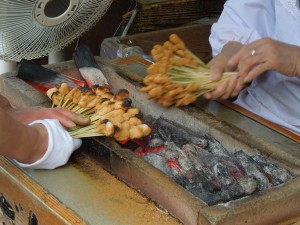
Roasting the rice dumplings
******************************************************************************
Imamiya has an excellent website in English: http://www.imamiyajinja.org/eng/imamiya_ENG/TOP.html
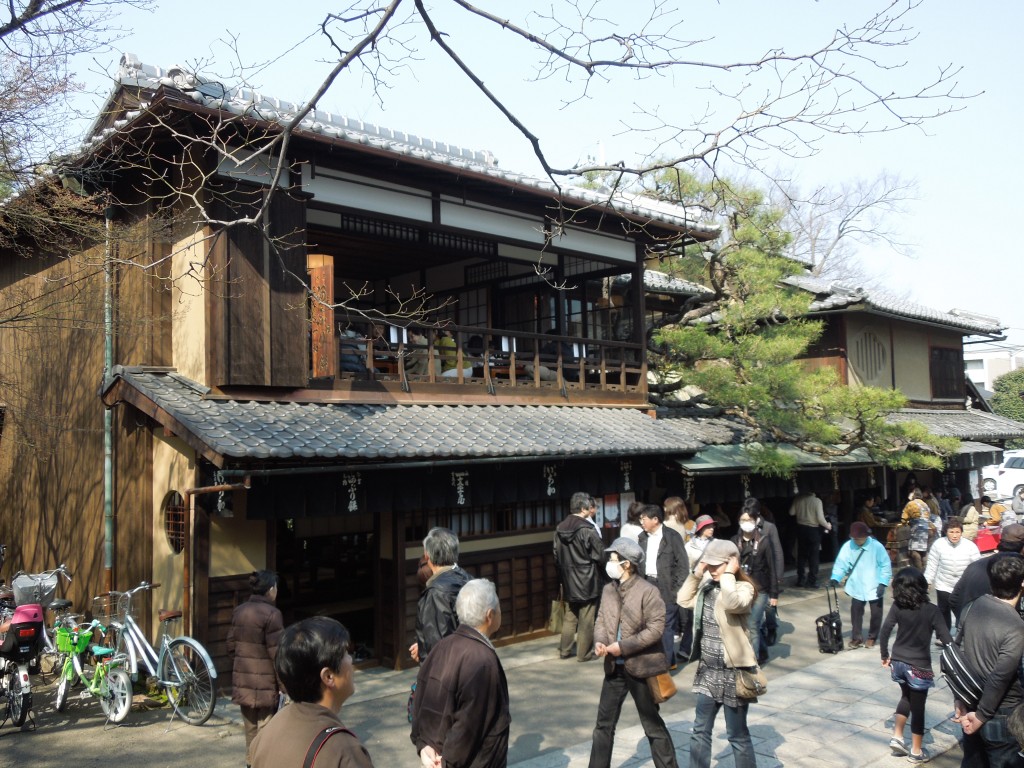
They've been selling dumplings here for over 1000 years!
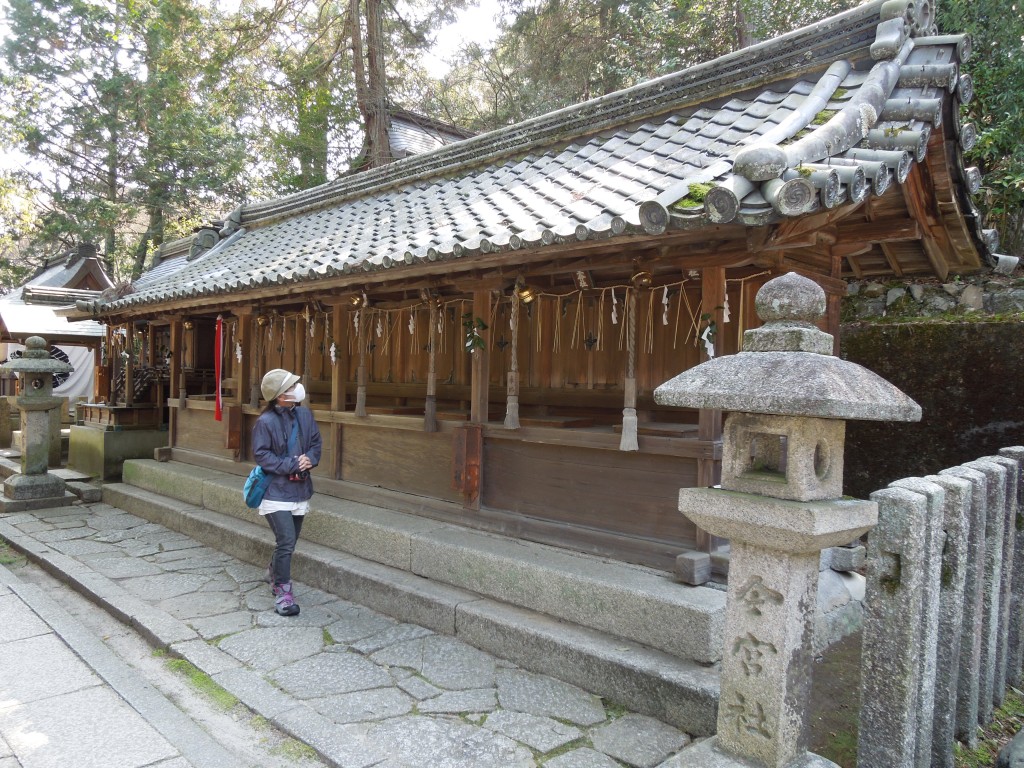
Protection from the plague at the Eight Shrines
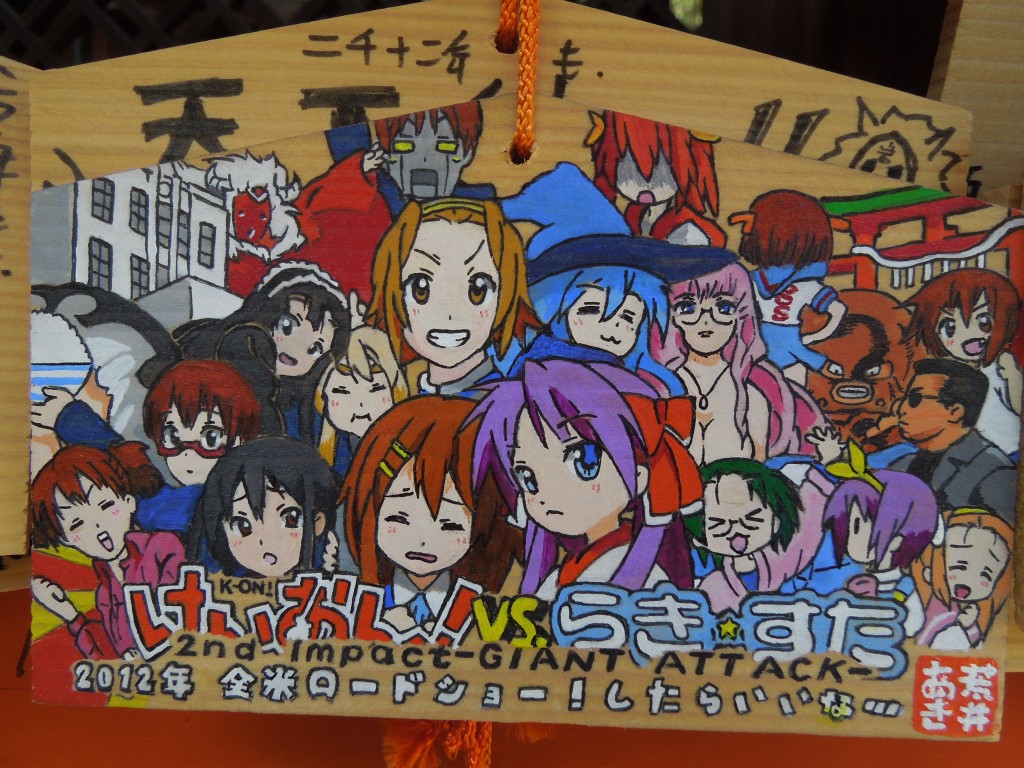
A decidedly modern take on the traditional ema
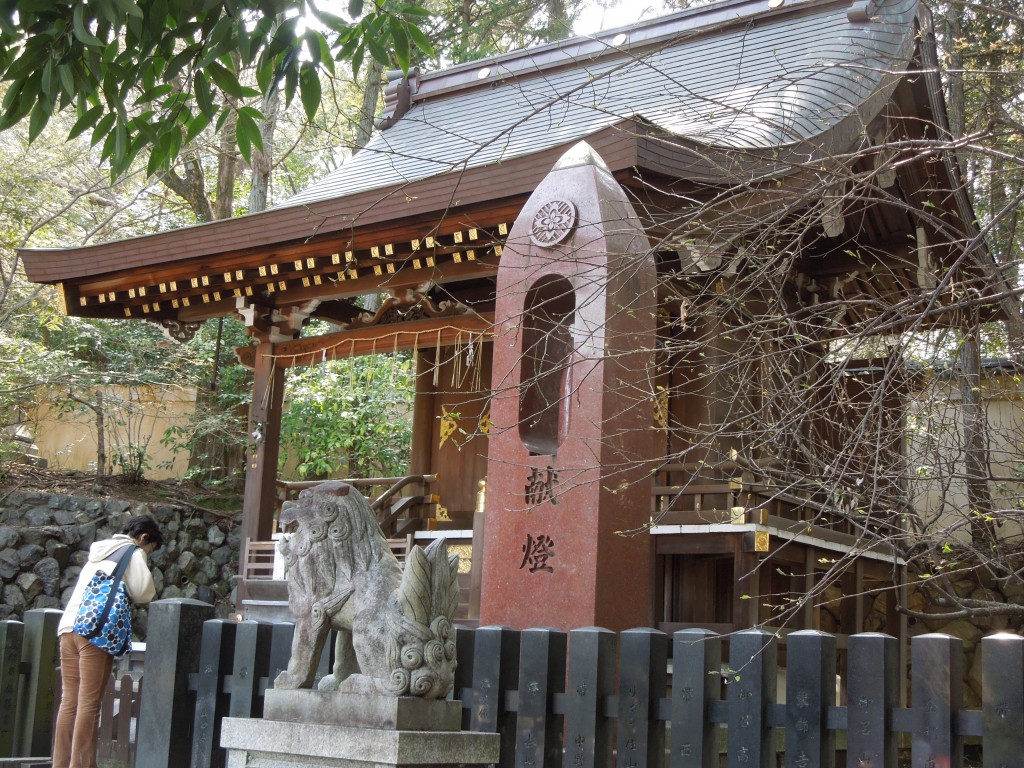
A contemporary touch at a subshrine. Nice try, but it just doesn't work...
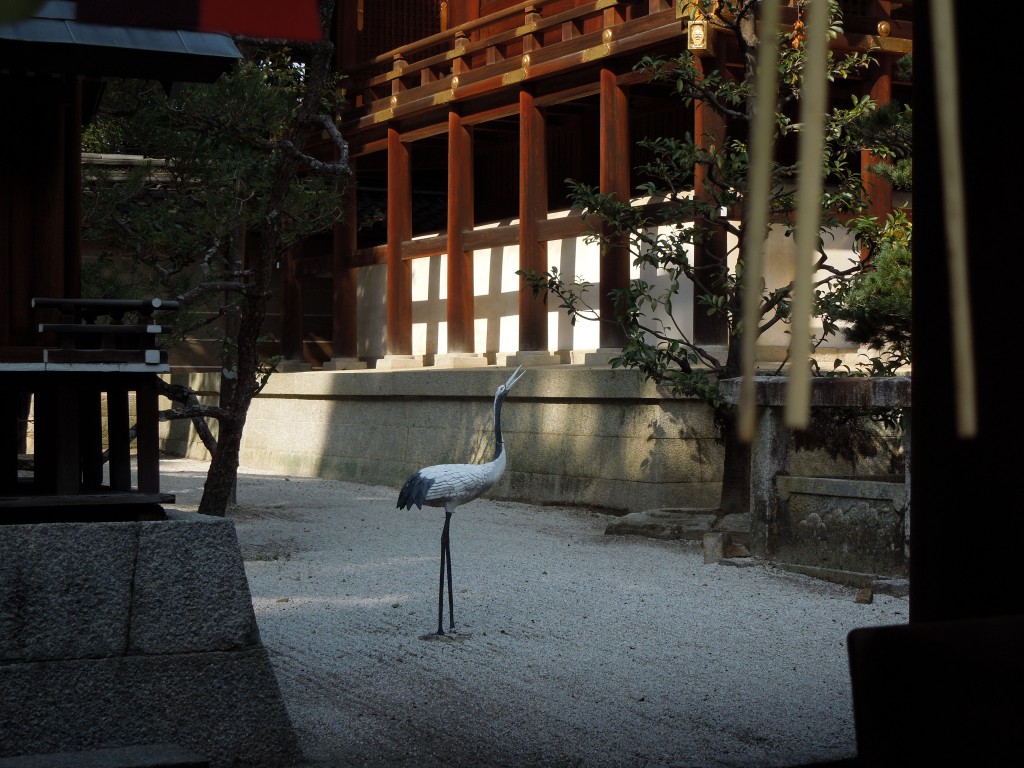
A curiously plastic ornament for a nature religion!

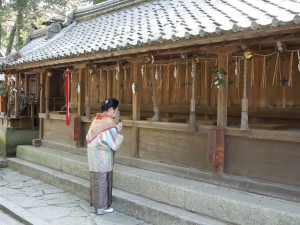
Japanische omamori sind wunderbar. Sie können online kaufen auf http://www.omamori.com
Actually the link you provide, Angela, is to a manga called Omamori Hime. The story revolves around Yuto Amakawa, an orphan who, on his sixteenth birthday, meets Himari, a cat spirit samurai girl who has sworn an oath to protect Yuto from the various monsters and demons that are out to kill him. If you want to buy omamori in the USA, check out http://shusseinarishrine.org/. If you’re in Europe, check out the site of Paul de Leeuw in Amsterdam. And in Japan, you can buy from any shrine with a functioning shrine office…